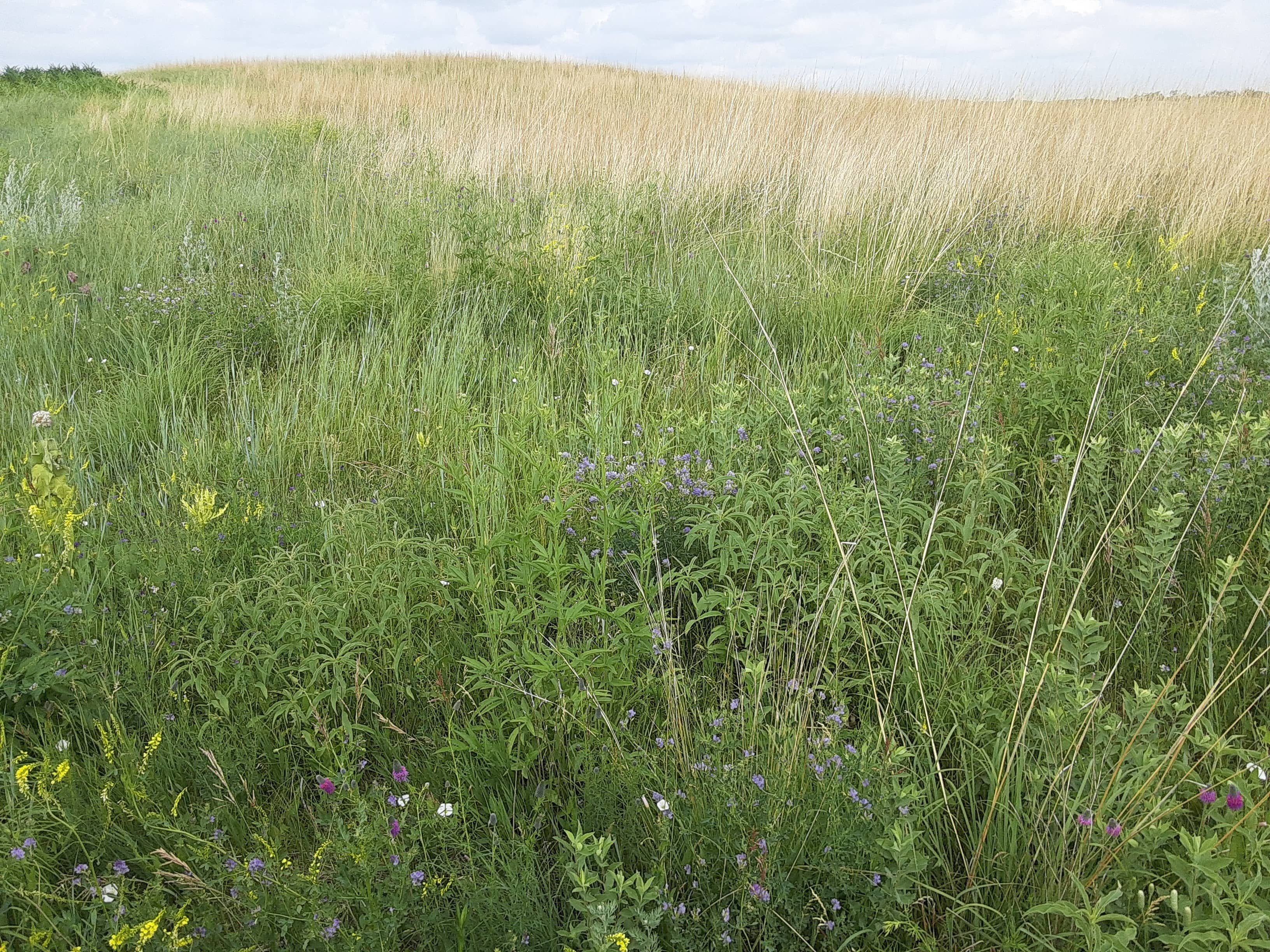
Improving prairie habitat via projects with funding from the Restoring America’s Wildlife Act would help stem the decline of endangered and threatened species throughout the region. Simonson Photo.
By Nick Simonson
The Restoring America’s Wildlife Act (House Resolution 2773, or “RAWA”), introduced in the United States Congress in 2021, is a bill designed to improve habitat for threatened and endangered species throughout the U.S., but its benefits go far beyond those at-risk creatures in decline around the country. Through contributions to state management agencies with plans to help conserve threatened and declining species of songbirds, insects, mammals, and plants, if voted into law, the legislation would help turn the tide of both habitat loss and the disappearance of creatures great and small on the landscape, according to North Dakota Wildlife Federation (NDWF) Executive Director John Bradley. However, there is a short window with political maneuvering and other hot topics in front of the legislative bodies at this time.
“This bill has passed out of both committees in the House of Representatives and the Senate so it’s waiting on the floor for a vote. We actually expect a vote in the House early next week, potentially Tuesday, [June 14],” Bradley explains.
As written, RAWA would dedicate federal dollars for the conservation or restoration of wildlife and plant species of greatest conservation need in the country directed via the wildlife conservation strategies of the individual states and foster wildlife conservation education and recreation projects. The Department of the Interior would administer a portion of the funding for a grant program, with awarded amounts to be used for recovery efforts focused on species in greatest conservation need, those listed as endangered or threatened, or for the habitats of those species throughout the country. That would mean significant funding for all fifty states, where populations of certain game and non-game species are on the decline across the board.
“RAWA would provide funding for state game and fish agencies to work on at-risk wildlife species through their state action plan. That’s nearly 15 million dollars coming into the state of North Dakota. That alone is why hunters and anglers should be encouraged and be supportive of this bill. As we know if you provide funding to improve habitat, your deer, your pheasants and all the game critters we like to chase will benefit,” Bradley explains, making the connection between the ideated projects and wildlife production.
As new habitat is put into the ground, sportsmen would likely see an increase in huntable game utilizing those areas as well as those species that are currently identified as threatened or endangered under the Endangered Species Act. Significant losses of grassland acres over the past fifty years in North Dakota have resulted decreased populations of songbirds both rare and common, including the state bird, the western meadowlark. Currently the state has a dozen species listed as threatened or endangered under the federal framework, including three insects, three birds, two mammals, one fish, and one plant. South Dakota currently supports 17 threatened or endangered species under the federal ESA, and 16 additional ones the state deems threatened or endangered. The dedicated funding for the habitats of these species and the benefit RAWA could provide is on par with other historic wildlife-focused legislation from the past century.
“It is a once in a generation opportunity. We talk about Pittman-Robertson dollars and what that has done to bring back our wildlife populations; this is the next step. RAWA would provide that dedicated, necessary funding for habitat projects with willing farms and ranches. That helps rural economies, it prevents species form getting listed which brings in regulations that can dampen our economy. Again, it’s wildlife habitat for the critters that need it most, but we will see the benefits to the things that we go out every spring and fall and chase after. It’s a win-win-win,” Bradley concludes.
Hunters, anglers, and conservationists can voice their support for RAWA by contacting their legislators through the U.S. Capitol switchboard and leaving a message at (202)224-3121. The NDWF has a submission form as well to allow constituents to send their federal legislators an email, asking them to support RAWA, via a pop-up at northdakotawildlife.org. The text of the bill can be found by searching congress.gov for “H.R. 2773;” currently the resolution has strong bipartisan support with 185 co-sponsors, including 40 Republicans and 145 Democrats. Currently no North Dakota, South Dakota or Montana legislators are co-sponsors, with three from Minnesota listed.
